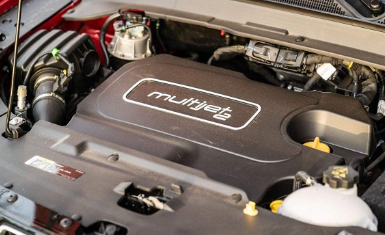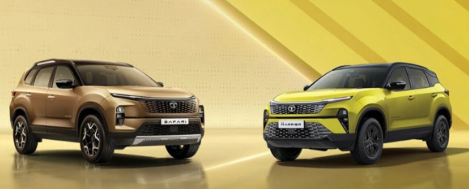Quick Overview
- Tata Motors now controls development of the Fiat-sourced 2.0L Multijet II diesel engine, removing dependence on Stellantis for updates or tuning.
- This unlocks flexibility to create multiple power variants for models like the Harrier and Safari, boosting competitiveness.
- Tata can now meet future emission norms faster and at lower costs, with full freedom to recalibrate and upgrade in-house.
- Production stays local at FIAPL, but MG Motor’s continued access to this engine remains uncertain.
Introduction
In a bold move that’s bound to shake up the SUV segment in India, Tata Motors has secured the rights to independently develop and upgrade the popular 2.0-litre Multijet diesel engine from Fiat. This very engine is the heart of the Tata Harrier and Safari, two of the brand’s most popular SUVs. Until now, Tata was bound by an expensive and limiting licensing deal with Fiat’s parent company, Stellantis.
But with this fresh agreement in place, Tata Motors is finally free to take full control of the engine’s development—tweaking it for performance, tuning it for fuel efficiency, and upgrading it to meet future emission norms—all without needing third-party approvals. It’s not just a technical win; it’s a strategic leap forward.


The Backstory: Tata’s Long-Standing Limitation
For years, Tata has relied on Stellantis for access to the 2.0L Multijet diesel engine, which was produced at the , a joint venture between the two automakers. However, despite co-producing the engine, Tata had no authority to modify it without consulting Stellantis—every tiny calibration tweak had to go through an expensive approval cycle.
To put it into perspective, just updating the ECU (Engine Control Unit) for a new calibration could cost Tata nearly 10 million euros. That’s the reason why Tata only offered a single engine tune—170hp—for both the Harrier and Safari. While the hardware had more potential, the software side was locked down.

Why This Move Matters – And What Changes Now
Now that Tata Motors has officially acquired the license to develop the engine in-house, things are about to change—dramatically.
Here’s what the new deal unlocks:
1. More Powertrain Variants Coming
Tata can finally offer different power outputs of the same engine—just like Mahindra does with its 2.2L mHawk diesel engine in the Thar, Scorpio N, and XUV700. Expect multiple tunes of the 2.0L diesel soon—maybe even a lower-cost 150hp version for entry-level trims, and an 180hp+ variant for performance-focused models.
2. Faster Compliance with Emission Norms
BS6.2 and upcoming Euro-like standards require constant engine updates. Tata can now quickly implement changes without going through Stellantis, saving time and money.
3. Improved Driving Experience
With freedom to recalibrate the ECU, Tata can now improve throttle response, drivability, and fuel economy. Expect smoother and more refined performance in future Harrier and Safari models.
4. Improved Driving Experience
Mahindra has long enjoyed flexibility thanks to its in-house diesel engine lineup. Now, Tata can compete head-on, offering not just compelling design and features—but also an equally dynamic powertrain experience.
Industry Impact: What Happens to Others Using This Engine?
Here’s where it gets interesting. The 2.0L Multijet isn’t unique to Tata. MG Motor India and Jeep also use this engine in models like the Hector and Compass. But Tata’s licensing deal is exclusive—it allows them to make performance and compliance updates on their own. Other brands may have to continue paying Stellantis for updates, or might even drop diesel altogether.
Insiders suggest MG Motor might phase out diesel when it launches the next-gen Hector around 2026. That would leave Tata with a unique advantage in the diesel SUV space.
Still Produced in India – But with New Creative Control
It’s important to note that production of the 2.0L diesel engine will still happen at the FIAPL plant in Ranjangaon, Maharashtra. Tata hasn’t moved production away—but now owns the right to independently make technical upgrades. The Intellectual Property (IP) for the base engine still lies with Stellantis, but Tata has full liberty over modifications it makes going forward.
This balance lets Tata take full advantage of the existing supply chain while slashing development time and cost for updates.
Why This Is a Masterstroke by Tata
Instead of investing in developing an all-new diesel engine—a risky bet in a world steadily moving toward electrification—Tata Motors has taken the smarter route. By leveraging a proven platform and gaining development autonomy, Tata saves hundreds of crores and years of R&D.
It also ensures that Tata’s diesel future is secure for at least the next few product cycles, even as EVs take over smaller segments.
Conclusion: A New Era for Tata SUVs Begins
Tata Motors’ move to acquire independent development rights for the 2.0-litre Multijet diesel engine is more than just a licensing deal—it’s a power move in every sense. It hands Tata the tools it needs to compete more fiercely, innovate more freely, and deliver SUVs that aren’t just bold in design, but also more versatile under the hood.
For buyers, it means more choice, better performance, and potentially even lower prices on base models. For Tata, it means flexibility, speed, and a firmer grip on the premium SUV segment. And for the industry, it signals that diesel still has life left—especially when in the right hands.

